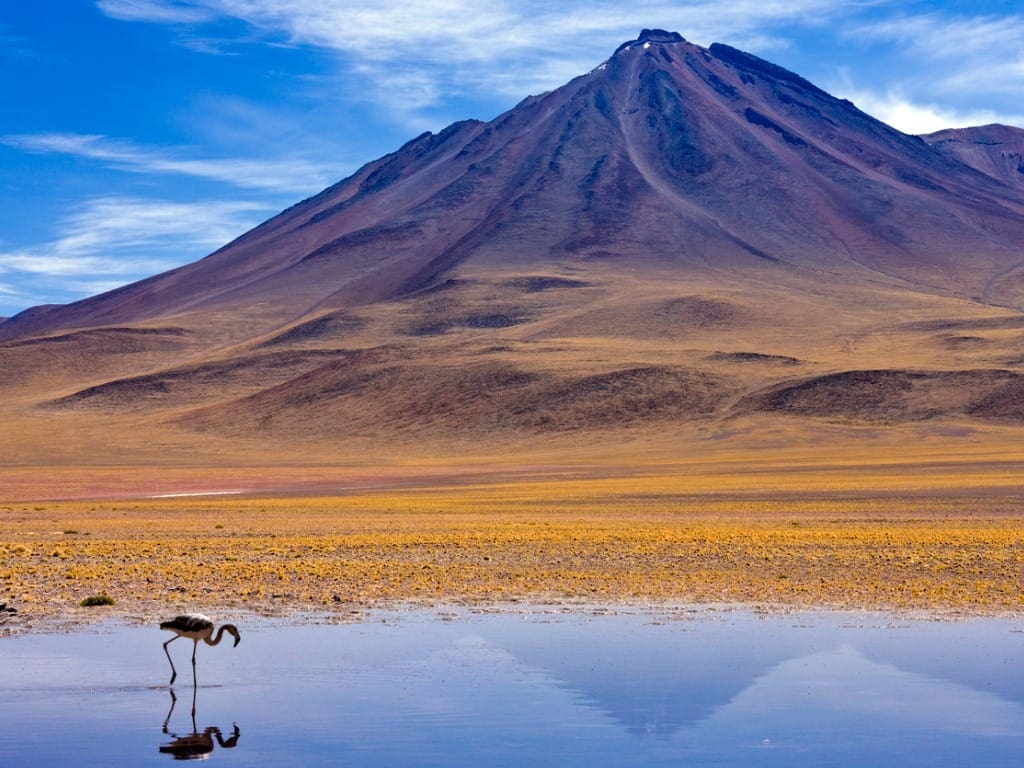The Atacama Desert in Chile is a testament to the enigmatic and elegant beauty of nature. This vast expanse of arid land stretches over 1,000 kilometers along the Pacific coast, captivating visitors with its otherworldly landscapes, unique ecosystem, rich human history, and astronomical significance. Let us delve into the mysteries of the Atacama Desert and explore its hidden wonders.
The Geography of Atacama
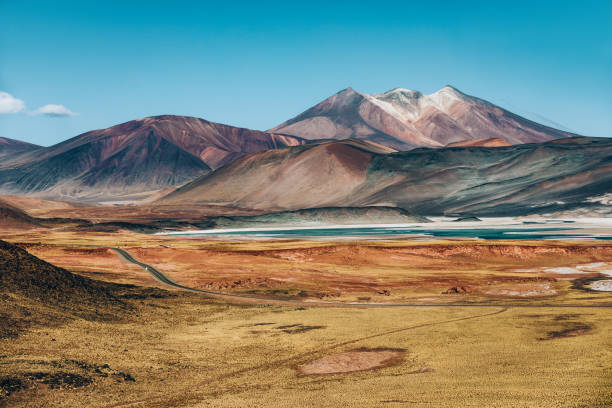
The Atacama Desert is bordered by the Andes Mountains to the east and the Pacific Ocean to the west, creating a unique topographical setting. This convergence of geographical forces has shaped the striking scenery that defines Atacama. From the dramatic salt flats of Salar de Atacama to the mystical Moon Valley with its lunar-like landscapes, the desert is a treasure trove of geographical wonders waiting to be explored.
The salt flats of Salar de Atacama, stretching over 3,000 square kilometers, are a sight to behold. The vast expanse of white salt crystals creates a surreal and otherworldly atmosphere. As the sun sets, the salt flats transform into a mirror-like surface, reflecting the vibrant colors of the sky and creating a breathtaking spectacle. Not far from the salt flats, the sand dunes of Atacama offer a completely different experience. These towering dunes, sculpted by the wind over thousands of years, create a sense of awe and wonder. Visitors can hike to the top of the dunes and witness the panoramic views of the desert stretching out before them, a seemingly endless sea of sand.
As you venture further into the heart of Atacama, you will encounter the majestic volcanic peaks that dot the landscape. These towering giants, remnants of ancient eruptions, stand as silent sentinels guarding the desert. The contrast between the barren desert floor and the snow-capped peaks creates a striking visual spectacle, showcasing the raw power of nature. And then there are the geysers. El Tatio, one of the world’s highest geyser fields, is located in Atacama. As the sun rises, the geysers come to life, spewing columns of steam and hot water into the frigid air. The sight of these natural geothermal wonders against the backdrop of the desert is truly mesmerizing.
The Climate: World’s Driest Desert
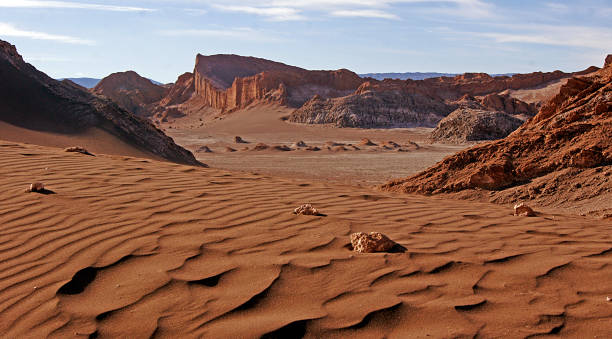
The Atacama Desert owes its reputation as the driest desert in the world to a combination of factors, including its proximity to the Pacific Ocean, the presence of the cold Humboldt Current, and the barrier effect of the Andes Mountains. The result is an incredibly low average annual rainfall, which in some parts of the desert can be as little as a few millimeters per year. This dry climate has shaped the unique features of Atacama and contributes to its ethereal beauty.
Despite its arid conditions, the Atacama Desert is teeming with life, albeit in unexpected forms. In the midst of the seemingly lifeless desert, you can find unique species of plants and animals that have adapted to survive in this harsh environment. From the resilient cacti that store water in their fleshy stems to the elusive desert foxes that roam the vast expanses, the desert is a testament to the adaptability of life.
Moreover, the Atacama Desert is a haven for stargazers and astronomers. It’s clear skies, free from light pollution, provide an unparalleled view of the cosmos. The desert is home to several world-class observatories, where scientists and enthusiasts alike gather to study the stars and unlock the mysteries of the universe. Be sure to bring a camera and a sense of adventure!
As you explore Atacama and the surrounding areas, be sure to plan accordingly. Ensure that you’re properly prepared to handle any sort of weather. This includes having the correct hiking/exploration gear, and map or course common sense. The best way to maximize your enjoyment is to be prepared!
The Unique Ecosystem of Atacama
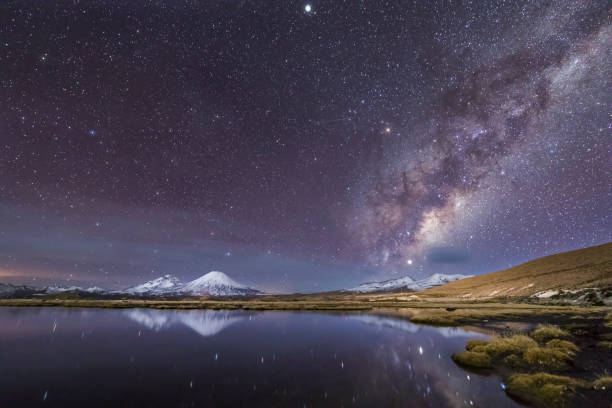
Despite its inhospitable conditions, the Atacama Desert is home to a surprising array of plant and animal species that have adapted to thrive in this harsh environment. The flora and fauna of Atacama showcase nature’s resilience and ability to survive against all odds. Atacama is inhabited by a multitude of flora and fauna species that have evolved to withstand the extreme aridity. Cacti, such as the iconic Copiapoa cacti, dot the landscape, while hardy shrubs like the Tamarugo have adapted to thrive in the desert’s saline soils. Animal life includes the endangered Darwin’s rhea, the Andean fox, and the ephemeral appearance of flamingos around the salt flats. These resilient organisms serve as a testament to the adaptability of life.
Beneath the surface of the parched desert lies another fascinating world – the microbial life of Atacama. In the driest regions, microbial communities survive by feeding on moisture from fog, a phenomenon known as fog harvesting. These microorganisms play a crucial role in the ecosystem by cycling nutrients and contributing to soil formation, demonstrating the remarkable adaptability of life even in the most extreme conditions.
Remember, that although Atacama is a tourist destination visited by many, it is important to ensure that the environment is left in the state you found it! Be respectful of nature by cleaning up after yourself and preserving the environment. Such natural wonders should be taken care of to ensure that future generations can enjoy it as well!
The Human History of Atacama
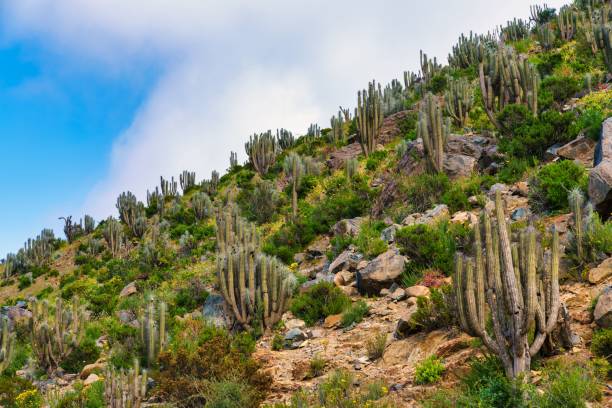
The Atacama Desert is not only a haven for natural wonders but also holds a rich history of human presence. From ancient civilizations to modern inhabitants, the desert has been a witness to the rise and fall of cultures that have left their mark on the landscape. The Atacama Desert was once home to thriving ancient civilizations, such as the Tiwanaku and the Inca. These cultures developed complex agricultural systems that relied on ingenious irrigation techniques to harness the scarce water resources. Today, their legacy can be observed in the well-preserved archaeological sites that dot the desert, offering a glimpse into the lives of these early settlers.
Despite the challenges posed by the harsh environment, humans have been able to thrive here for thousands of years. This is a testament to the Chileans and their strength. It will continue to remain not only as a beacon of natural beauty, but as an example of the resolve of the people that live there.
The Atacama Desert in Chile stands as a living testament to the enigmatic elegance of nature. Its unique geography, extreme climate, resilient ecosystem, rich human history, and astronomical significance make it a natural wonder that continues to awe and inspire. Whether peering at the stars through a telescope in an observatory, exploring ancient archaeological sites, or simply marveling at the desert’s ethereal landscapes, a journey to the Atacama Desert is an unforgettable experience that offers a glimpse into the extraordinary forces that have shaped our world.
